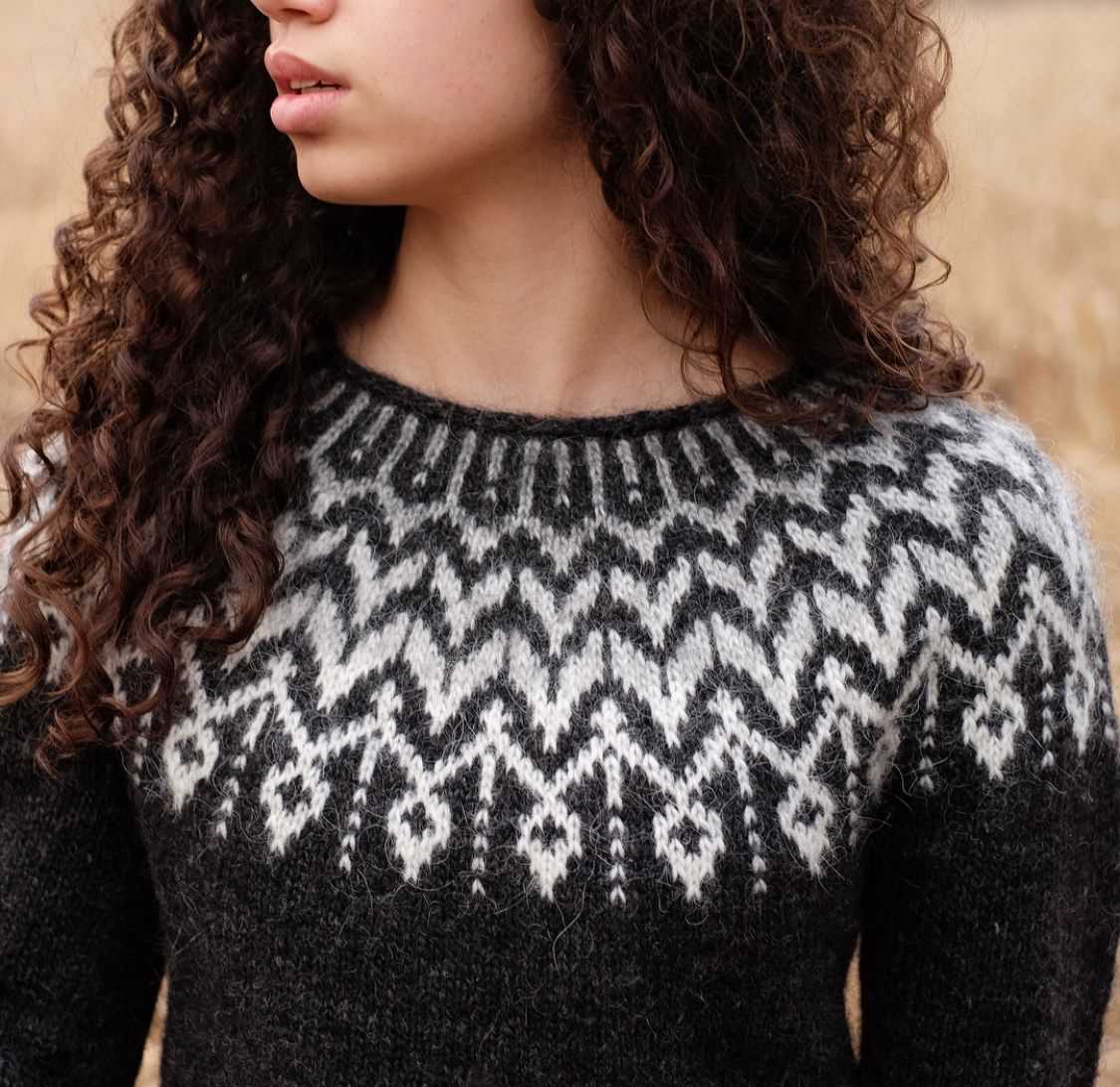
Knitting has been a traditional craft for centuries, but it has still managed to evolve with the times. One of the most popular trends in knitting today is the use of top down patterns. These patterns have gained popularity for their versatility and ease of use. Instead of starting at the bottom and working your way up, top down patterns start at the neckline and work their way down to the hem. This allows for greater flexibility in sizing and customization.
Modern top down knitting patterns are a great option for knitters of all skill levels. Beginners can start with a simple top down sweater or cardigan, while more advanced knitters can experiment with complex lace or cable designs. The beauty of top down patterns is that they can be easily adjusted to fit any body shape or size. This makes them particularly popular among people who struggle to find clothes that fit well off the rack.
Another advantage of top down knitting patterns is that they allow for easier fitting as you go. With a top down sweater, for example, you can try it on as you go and make adjustments as needed. This eliminates the frustration of spending weeks or months knitting a garment only to find that it doesn’t fit properly. Top down patterns also often require less seaming, which means less finishing work once you’ve completed the knitting.
Top down knitting patterns are not only practical, but also offer a wide range of design possibilities. You can incorporate different stitch patterns, colors, and textures to create a truly unique piece. Whether you’re looking for a cozy winter sweater, a lightweight summer top, or anything in between, there’s a top down pattern out there for you.
So why not give top down knitting patterns a try? Whether you’re a beginner or an experienced knitter, you’ll find that they offer endless opportunities for creativity and customization. With their flexibility and ease of use, top down patterns are the perfect choice for anyone looking to try something new in their knitting projects.
What are Modern Top Down Knitting Patterns?
In the world of knitting, there are various techniques and styles that designers and crafters can choose from. One popular method is top-down knitting, which involves starting a project from the neckline or the top of the garment and working downwards. This technique allows for more control and customization, as it allows the knitter to try on the garment as they go and make adjustments if needed. Modern top-down knitting patterns have become increasingly popular in recent years, as they offer a contemporary take on this traditional technique.
Modern top-down knitting patterns often feature unique designs and construction methods that combine traditional techniques with modern aesthetics. They can range from simple and basic sweaters to intricate lace shawls and cardigans. The appeal of these patterns lies in their versatility and adaptability, as they can be easily customized to fit different body types and sizes.
One key element of modern top-down knitting patterns is the use of detailed instructions and charts. These patterns provide step-by-step guidance on how to create the garment, including measurements, stitch counts, and shaping instructions. Some patterns also include helpful tips and techniques to make the process easier for knitters of all skill levels.
Another feature of modern top-down knitting patterns is the inclusion of alternative sizing options. While traditional knitting patterns often come in set sizes, modern patterns often offer multiple size options or even customization instructions, allowing knitters to create a garment that fits perfectly.
Overall, modern top-down knitting patterns offer a fresh and contemporary approach to this classic technique. They provide knitters with the opportunity to create unique and customized garments, while also expanding their skills and knowledge of knitting.
Understanding the Basics of Top Down Knitting
Top down knitting is a popular technique in modern knitting patterns, allowing knitters to start their projects from the neckline or the top of a garment and work their way down. This approach offers several advantages, including the ability to customize the fit and length of the garment, as well as the opportunity to try it on as you go. If you’re new to top down knitting, it’s important to understand the basics before diving in.
1. Choosing the Right Yarn and Needles: When starting a top down knitting project, it’s crucial to select the appropriate yarn and needles. The pattern you’re using will typically recommend a specific yarn weight and needle size, so be sure to follow those guidelines. It’s important to achieve the correct gauge, as this will determine the size and fit of your finished garment.
2. Understanding the Construction: In top down knitting, you’ll start by creating the neckline or yoke of the garment. This is typically done by casting on stitches and working in a circular or flat pattern. As you progress, you’ll gradually increase the number of stitches to shape the shoulders and sleeves. Once the yoke is complete, you’ll separate the sleeves and continue working on the body portion of the garment.
3. Customizing the Fit: One of the great advantages of top down knitting is the ability to customize the fit of your garment. As you work down from the neckline, you can try on your project to check the length and make any necessary adjustments. This allows you to create a garment that is tailored to your specific measurements and preferences.
4. Adding Patterns and Shaping: Top down knitting patterns often include options for various stitch patterns and shaping techniques. This allows you to incorporate different textures and designs into your garment. Whether you prefer a simple stockinette stitch or a more intricate lace pattern, top down knitting provides the flexibility to create a unique and personalized project.
5. Finishing Techniques: Once you’ve completed the body of your top down knitting project, you’ll need to finish off the neckline, sleeves, and any other details. This may involve picking up stitches for ribbing or edging, creating buttonholes, or adding decorative finishing touches. Following the pattern instructions will ensure a polished and professional-looking final result.
Overall, understanding the basics of top down knitting is essential for successfully completing these types of projects. By selecting the right yarn and needles, understanding the construction process, customizing the fit, incorporating patterns and shaping, and mastering finishing techniques, you’ll be well-equipped to tackle any top down knitting pattern with confidence.
The Evolution of Top Down Knitting Patterns
Top down knitting patterns have undergone significant evolution over the years, making them a popular choice among modern knitters. These patterns offer a unique and versatile approach to creating garments and accessories, allowing for customization and easy fitting adjustments.
Traditional top down knitting patterns typically began with the neckline and were worked in one piece from the top to the bottom. While these patterns provided a seamless finish and allowed for easy fitting modifications, they often lacked the flexibility to accommodate different yarn weights or stitch patterns.
Modern top down knitting patterns have addressed these limitations by incorporating new techniques and design elements. One innovation is the use of provisional cast-on, which allows for greater flexibility in adjusting garment lengths and adding decorative elements. Additionally, the introduction of lace and cable stitches has added complexity and interest to top down designs.
Another key development in top down knitting patterns is the incorporation of raglan shaping. Raglan sleeves, which are seamlessly integrated into the sweater body, provide a more tailored fit and allow for ease of movement. This shaping technique has become increasingly popular among knitters, providing a flattering silhouette and reducing the need for additional seaming.
With the advent of knitting technology and online communities, top down knitting patterns have become more accessible than ever. Knitters can now easily find and share patterns, techniques, and tips through online platforms and social media groups. This increased connectivity has fostered a vibrant knitting community, encouraging creativity and collaboration in top down knitting.
In conclusion, the evolution of top down knitting patterns has made them a versatile and customizable option for modern knitters. With a range of techniques, design elements, and online resources available, knitters can explore and create unique garments and accessories that fit their personal style.
Advantages of Modern Top Down Knitting Patterns
Modern top down knitting patterns have gained popularity among knitters due to their numerous advantages. One of the main advantages is the customization aspect. With top down patterns, knitters have the ability to try on and adjust the garment as they go along, ensuring a perfect fit. This eliminates the need for complicated calculations and measurements that traditional bottom-up patterns often require.
Furthermore, modern top down knitting patterns offer versatility in terms of design. Knitters have the freedom to incorporate different stitch patterns, colorwork, or lace designs seamlessly into their projects. This allows for endless creativity and the ability to create unique and personalized garments.
Flexibility is another key advantage of top down knitting patterns. Since the garment is worked from the top down, knitters have the flexibility to adjust the length of sleeves, body, or neckline as they desire. This makes it easier to adapt the pattern to individual style preferences or body shape.
Another advantage is the convenience of top down patterns. Knitters can easily try on the garment as they progress, allowing for immediate adjustments or modifications. This saves time and reduces the chances of having to rip out and rework sections of the project.
In conclusion, modern top down knitting patterns offer a range of advantages including customization, versatility, flexibility, and convenience. These patterns provide knitters with the opportunity to create well-fitting, unique, and personalized garments with ease.
Customization and Fit
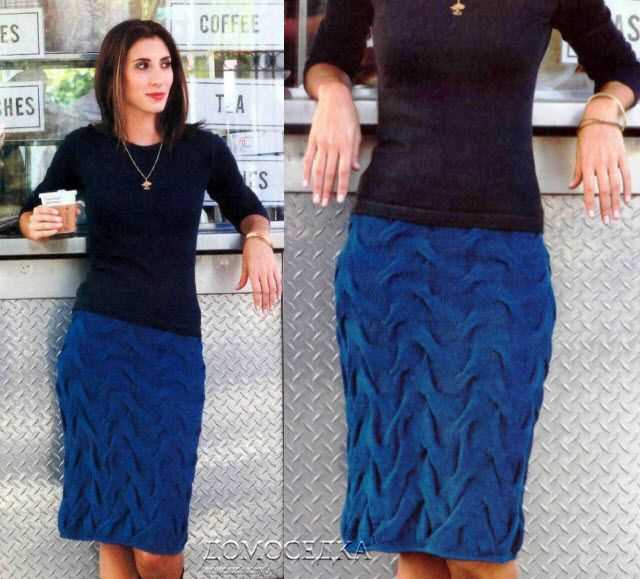
One of the key advantages of modern top down knitting patterns is the ability to customize the fit of a garment. Unlike traditional bottom-up knitting patterns, which require a detailed understanding of shaping and an accurate gauge, top-down patterns allow for easy adjustments as you go.
With a top-down pattern, you begin by knitting the yoke of the garment, which includes the neck and shoulders. This allows you to try on the garment as you go and make adjustments to the fit. You can easily modify the length of the sleeves, the depth of the neckline, or the width of the shoulders to suit your preferences.
Furthermore, many modern top-down patterns also provide detailed instructions on how to add optional shaping techniques, such as bust darts or waist shaping, to ensure a perfect fit. These patterns often include clear guidelines on how to calculate the number of stitches to increase or decrease and where to place them.
Additionally, top-down patterns often include multiple size options, so you can choose the size that best matches your measurements. This allows you to create a garment that fits you perfectly, regardless of your body shape or size.
Overall, with modern top-down knitting patterns, you have the freedom to create a garment that is tailored specifically to your body and preferences. The ability to customize the fit allows you to achieve a flattering and comfortable result every time you knit.
Efficiency and Speed
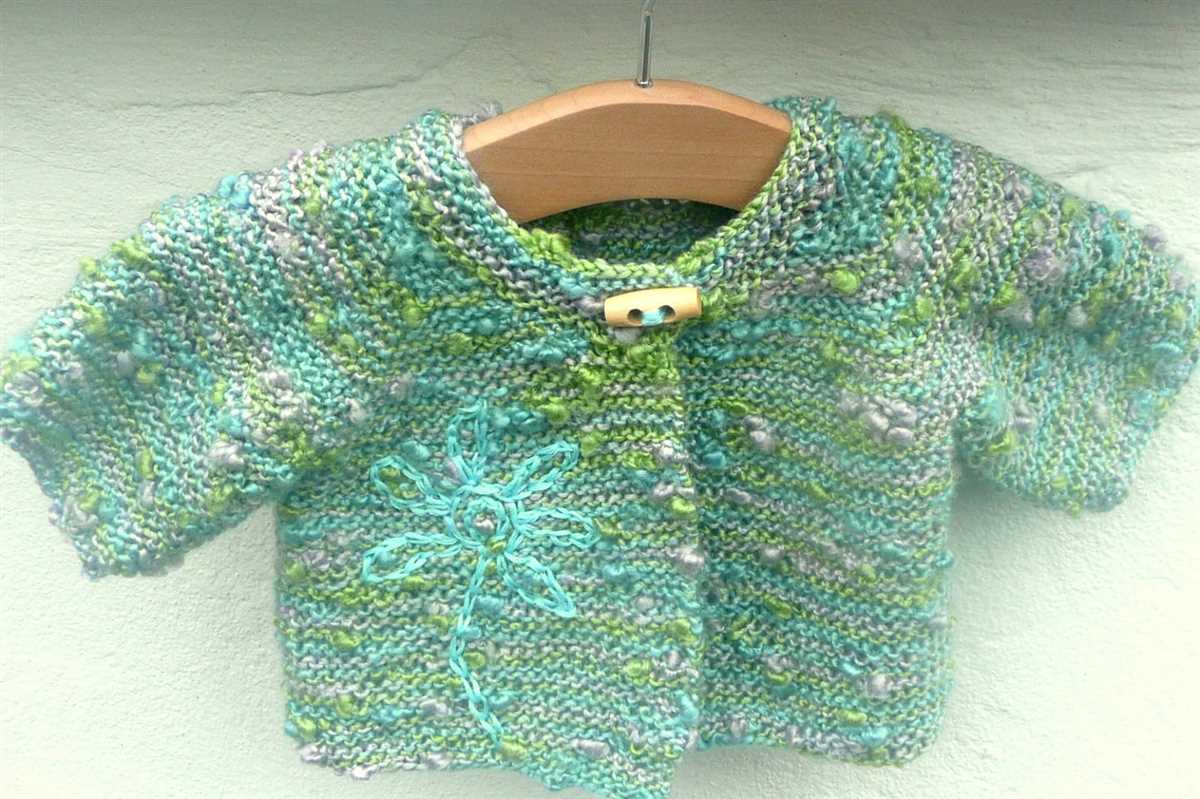
In the world of knitting, efficiency and speed are highly valued. Knitters are constantly looking for ways to streamline their process and complete projects more quickly. This is especially important for modern top down knitting patterns, which often have complex stitch patterns and require a large number of stitches.
One way to increase efficiency is by using circular needles instead of straight needles. Circular needles allow knitters to easily work in the round, eliminating the need to constantly turn the work and reducing the amount of time spent on each row. They also distribute the weight of the project more evenly, making it more comfortable to knit for long periods of time.
Another way to save time is by using modern knitting techniques, such as knitting two stitches together or working multiple stitches at once. These techniques can help speed up the knitting process by reducing the number of individual stitches that need to be worked.
Additionally, using stitch markers can be a useful tool for increasing efficiency. By marking key points in the pattern, such as the beginning of the round or pattern repeats, knitters can easily keep track of their progress and avoid mistakes. This can save time by preventing the need to rip back and fix errors.
In conclusion, efficiency and speed are important considerations in modern top down knitting patterns. By using circular needles, modern techniques, and stitch markers, knitters can streamline their process and complete projects more quickly.
Popular Techniques Used in Modern Top Down Knitting Patterns
In modern top down knitting patterns, there are several popular techniques that are used to create unique and stylish designs. These techniques allow for flexibility in sizing, customization, and a seamless construction. Here are some of the most commonly used techniques:
1. Raglan Sleeves
Raglan sleeves are a popular choice in top down knitting patterns because they create a seamless transition between the body and sleeves. This technique involves knitting the sleeves and body of the garment simultaneously, decreasing at specific points to create a diagonal line from the underarm to the neckline. Raglan sleeves provide a comfortable fit and are often used in sweaters and cardigans.
2. Short Rows
Short rows are used to shape the neckline or add darts in top down knitting patterns. This technique involves knitting a partial row before turning the work and knitting back in the opposite direction. By adding short rows, the fabric can be shaped without changing the overall stitch count. Short rows are often used to create a scooped or V-shaped neckline.
3. Provisional Cast On
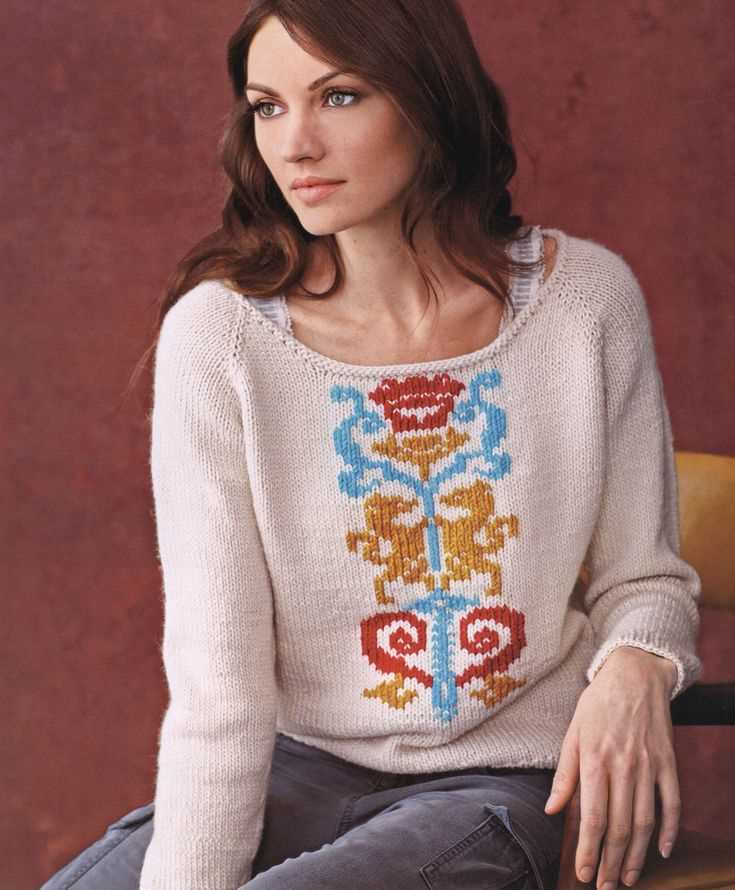
A provisional cast on is a temporary cast on method used in top down knitting patterns to create a seamless edge that can be easily joined later. This technique involves using waste yarn to create the initial stitches, which are then transferred to a needle or scrap yarn. The provisional cast on is often used when knitting a collar or trim that needs to be joined to the live stitches at the end.
4. Pick Up and Knit
Pick up and knit is a technique used to add additional stitches to an existing piece of knitting. In top down knitting patterns, this technique is often used to pick up stitches along the edges of sleeves, collars, or button bands. By picking up and knitting stitches, the knitter can seamlessly continue the knitting without needing to bind off and join additional pieces.
5. Mosaic Knitting
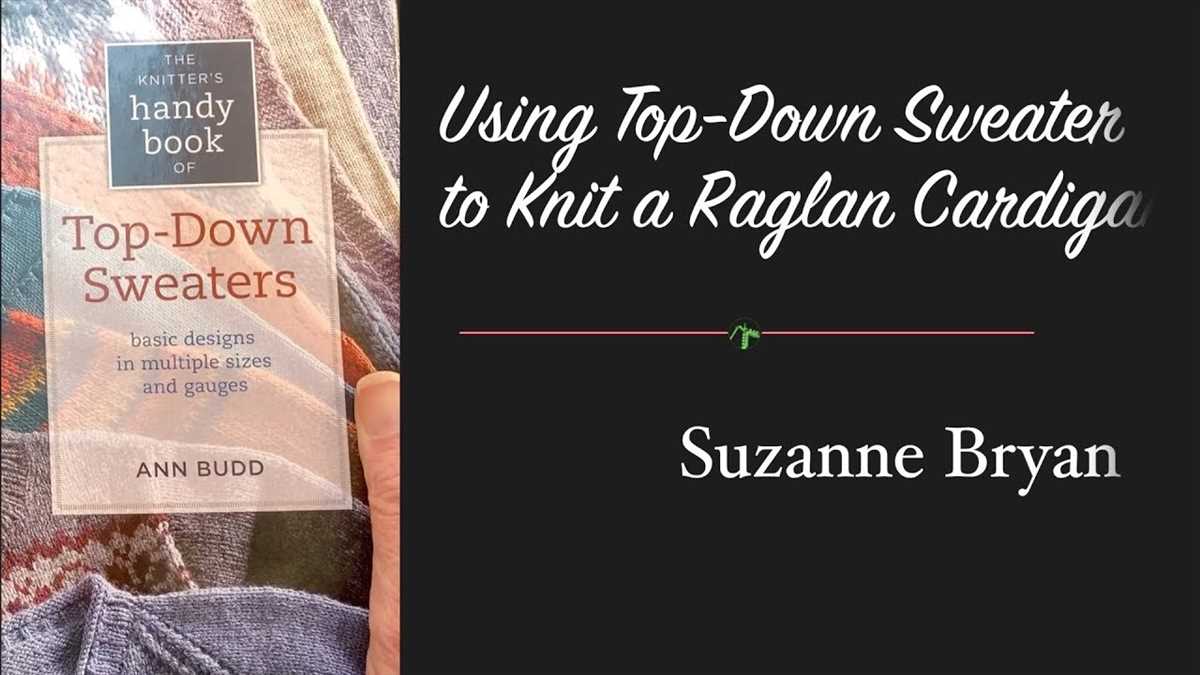
Mosaic knitting is a colorwork technique that involves using slip stitches to create intricate patterns. In top down knitting patterns, mosaic knitting can be used to add color and texture to the yoke or cuffs of a sweater. This technique creates a bold and eye-catching design without the need for complicated fair isle or intarsia knitting.
These are just a few examples of the popular techniques used in modern top down knitting patterns. By incorporating these techniques into your knitting projects, you can create beautiful and customized garments that are both fashionable and comfortable.
Raglan Sleeves
The raglan sleeve is a popular style of sleeve construction in modern top-down knitting patterns. It is characterized by diagonal seams that extend from the underarm to the neckline, creating a distinct V shape. This sleeve style is named after Lord Raglan, a British commander in the Crimean War, who popularized the design in military uniforms.
Raglan sleeves offer several benefits for knitters. First, they provide a comfortable and flattering fit, as the diagonal seams follow the natural shape of the shoulder and upper arm. This makes the raglan sleeve an excellent choice for garments that need to accommodate a wide range of body types. Additionally, the construction of raglan sleeves allows for easy customization, as the sleeve length can be easily adjusted by increasing or decreasing the number of raglan increases.
The construction of raglan sleeves lends itself well to top-down knitting patterns, as the sleeves can be seamlessly integrated into the yoke of the garment. This eliminates the need for complicated seaming and allows for a more streamlined and professional finish. In modern top-down knitting patterns, raglan sleeves are often combined with other design elements, such as colorwork or lace panels, to create visually interesting garments that are both stylish and comfortable to wear.
Whether you’re knitting a sweater, cardigan, or pullover, consider incorporating raglan sleeves into your next project. Not only will you enjoy the ease of construction and customizable fit, but you’ll also have a garment with a timeless and classic look. So, grab your needles and start knitting a raglan sleeve masterpiece!
Set-in Sleeves
Set-in sleeves are a classic style of sleeve construction that create a tailored and polished look. This method involves knitting the sleeves separately and then sewing them into the armholes of the body. Set-in sleeves offer a great fit and allow for ease of movement.
When working with modern top-down knitting patterns, set-in sleeves can be easily incorporated into the design. By starting the sweater from the top and shaping the neckline, the sleeves can be seamlessly integrated into the garment. This method allows for customization and adjustments to ensure the perfect fit.
One of the advantages of set-in sleeves is that they provide a more structured and defined armhole shape, resulting in a clean and polished finish. The sleeves can be shaped using decreases and increases, giving a tailored and fitted look.
Another benefit of set-in sleeves is that they allow for ease of movement. The shaping around the armhole and the shoulder allows for a greater range of motion, making the garment more comfortable to wear. This is particularly important for garments that require more mobility, such as sweaters for active wear.
In summary, set-in sleeves are a classic and versatile sleeve construction method that can be easily incorporated into modern top-down knitting patterns. They offer a tailored and polished look, as well as ease of movement. Whether you’re knitting a sweater for everyday wear or a more active lifestyle, set-in sleeves are a great option to consider.
Circular Yoke
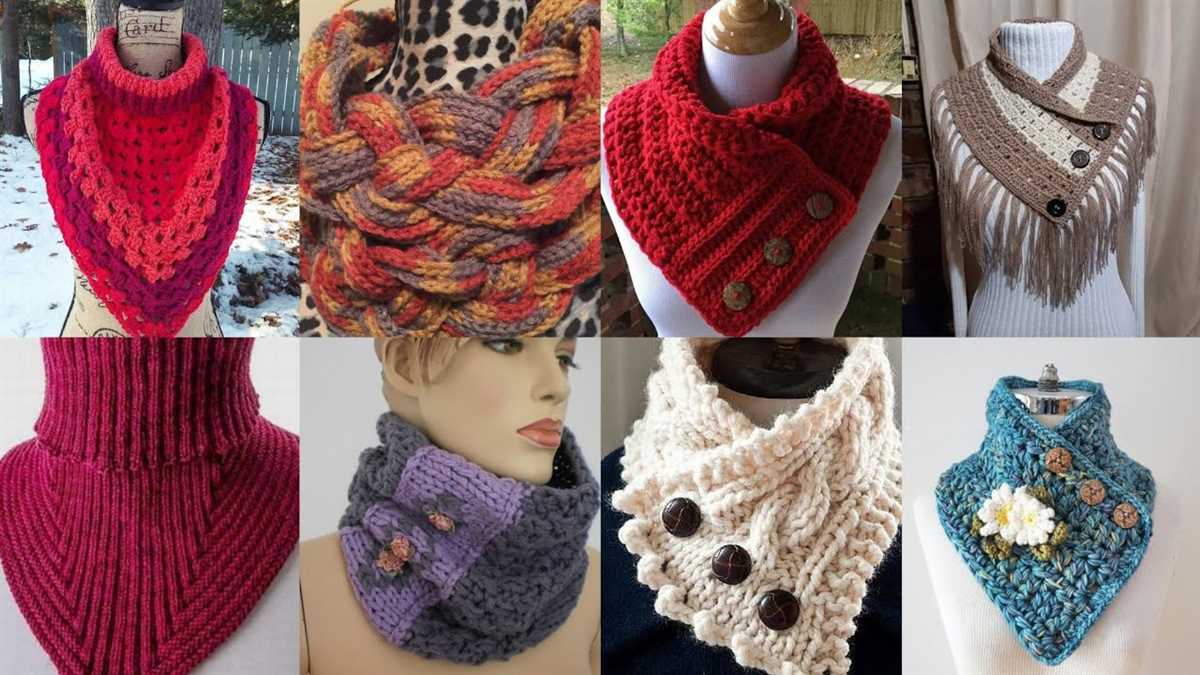
The circular yoke is a popular design element in modern top down knitting patterns. It is characterized by a round, seamless yoke that is worked in a continuous circle from the top to the bottom of the sweater. This technique allows for easy and customizable shaping, as well as the inclusion of various pattern stitches and colorwork designs.
One of the advantages of the circular yoke is its versatility. It can be used in a wide range of garment styles, including sweaters, cardigans, and even dresses. The circular yoke is particularly well-suited for designs with a more fitted silhouette, as it creates a flattering and streamlined look.
The construction of a circular yoke begins with the neckline, which is typically worked back and forth in rows. Once the desired width and depth of the neckline are reached, the work is joined in the round to form the yoke. From there, the stitches are increased evenly across each round to create the desired shape. This gradual shaping allows for a comfortable fit around the shoulders and bust, while still maintaining a clean and polished appearance.
When it comes to adding pattern stitches or colorwork to a circular yoke, the possibilities are nearly endless. Many designers choose to incorporate decorative motifs or geometric patterns that are repeated around the circumference of the yoke. This can be achieved through the use of stranded knitting, slip stitches, or lace techniques. The circular yoke is a great canvas for showcasing intricate stitch patterns.
Tips for Choosing the Right Yarn for Top Down Knitting
When it comes to top down knitting, choosing the right yarn is crucial for a successful project. The right yarn can make a huge difference in the final look and feel of your knitted garment. Here are some tips to help you choose the perfect yarn for your top down knitting project.
Consider the Fiber Content
First and foremost, consider the fiber content of the yarn. Different fibers have different characteristics that can affect the drape, stitch definition, and overall wearability of your knitted garment. For a top down project, you’ll want a yarn that has good drape and will hold its shape well. Natural fibers like wool, alpaca, and silk are great choices for top down knitting.
Check the Gauge
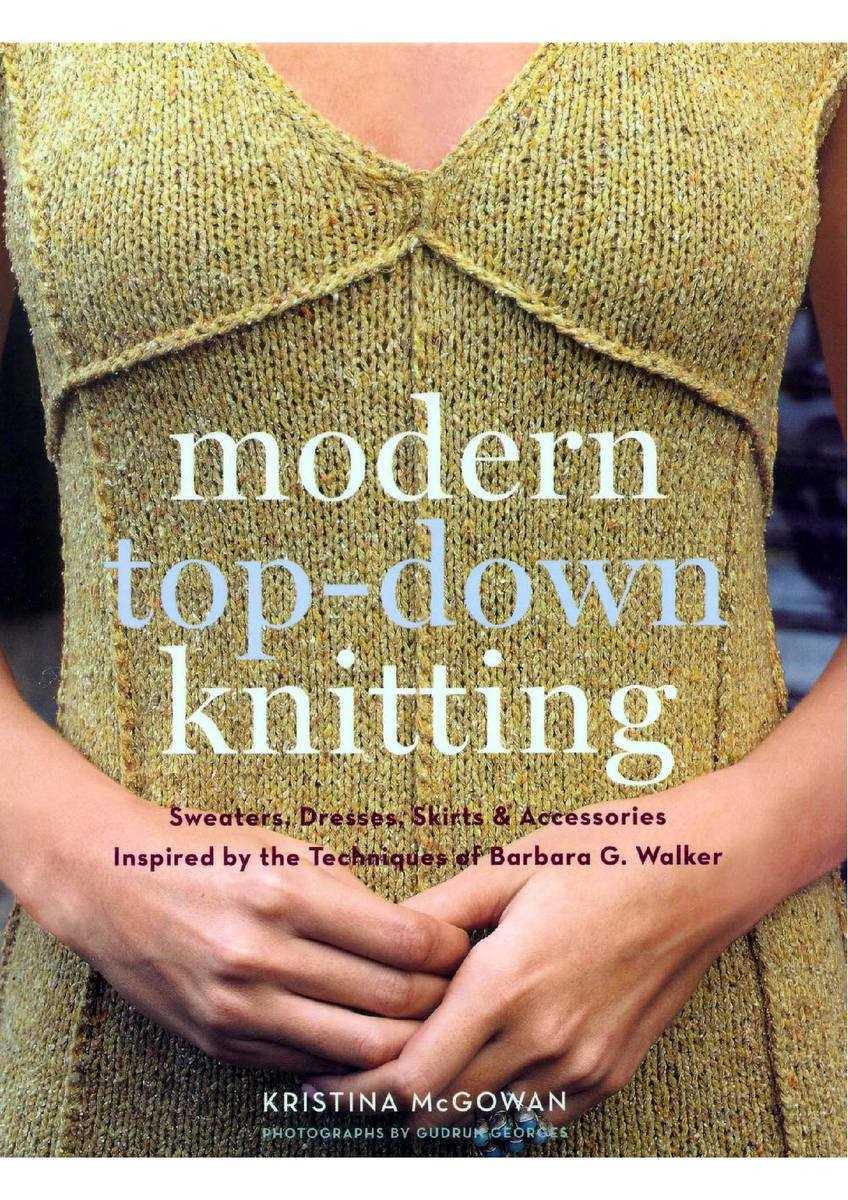
Before starting your top down project, it’s important to check the gauge of your yarn. The gauge refers to the number of stitches and rows per inch, and it determines the size and fit of your finished garment. Make sure to match the gauge specified in your pattern by swatching with your chosen yarn and adjusting your needle size if necessary.
Consider the Weight
The weight of the yarn is another important factor to consider. The weight will determine the thickness and warmth of your knitted garment. For top down knitting, you’ll generally want to choose a yarn that is lightweight and breathable, especially if you’re knitting a sweater or cardigan. Look for yarns that are labeled as “DK” (double knitting) or “sport” weight for a light and comfortable finished garment.
Take Color into Account
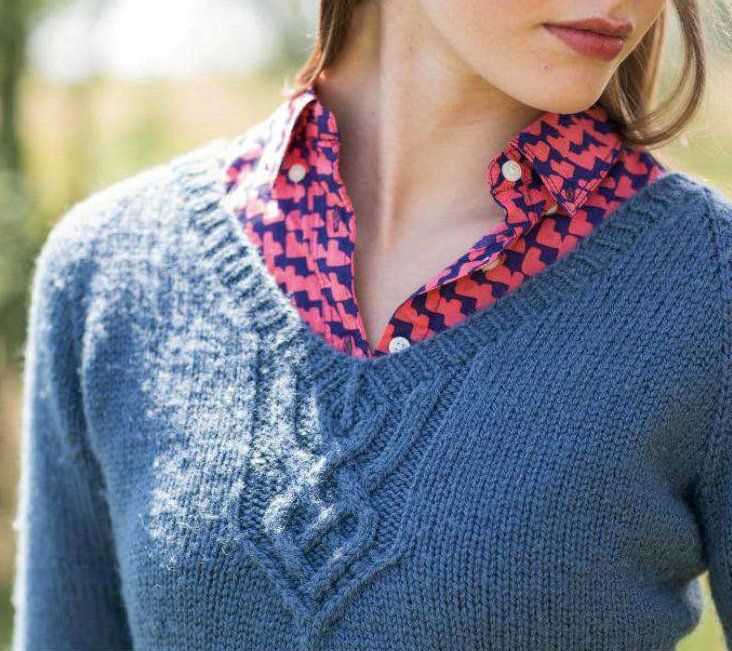
Finally, consider the color of the yarn. The color can greatly impact the overall look of your top down project. If you’re knitting a complex stitch pattern or lacework, it’s best to choose a solid or semi-solid color yarn that will highlight the stitch details. On the other hand, if you’re knitting a simple stockinette stitch or garter stitch, you can have fun with variegated or self-striping yarns to add visual interest to your project.
By considering the fiber content, gauge, weight, and color of your yarn, you can ensure that you choose the perfect yarn for your top down knitting project. Take your time to find the right yarn that will complement your pattern and make your finished garment truly stand out.
Considerations for Fiber Content
When choosing a knitting pattern, one of the most important factors to consider is the fiber content of the yarn. Different fibers have different properties that can greatly affect the final look and feel of your knitted garment. Here are some key considerations for fiber content:
Natural Fibers:
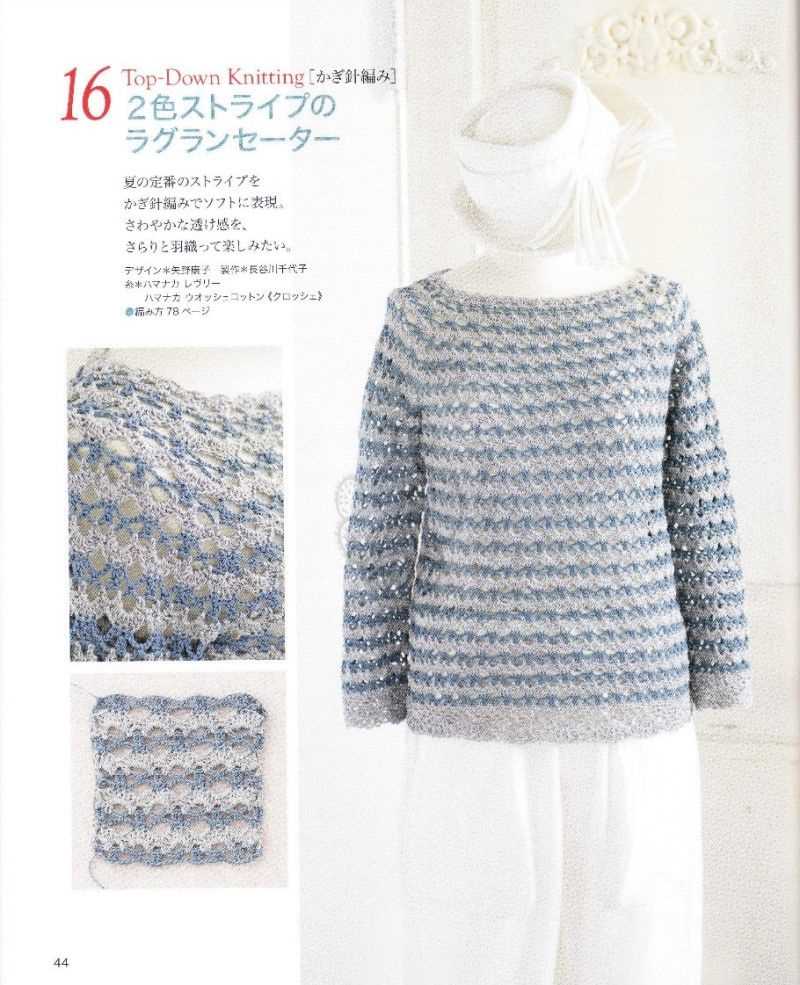
Many knitters prefer to work with natural fibers, such as wool, cotton, and silk. Natural fibers are known for their breathability, durability, and ability to retain warmth. Wool, in particular, is a popular choice for cold weather knits because of its excellent insulation properties and ability to wick away moisture. Cotton, on the other hand, is a great option for lighter weight garments, as it is lightweight and breathable. Silk is a luxurious fiber that adds a beautiful drape and sheen to knitted items.
Synthetic Fibers:
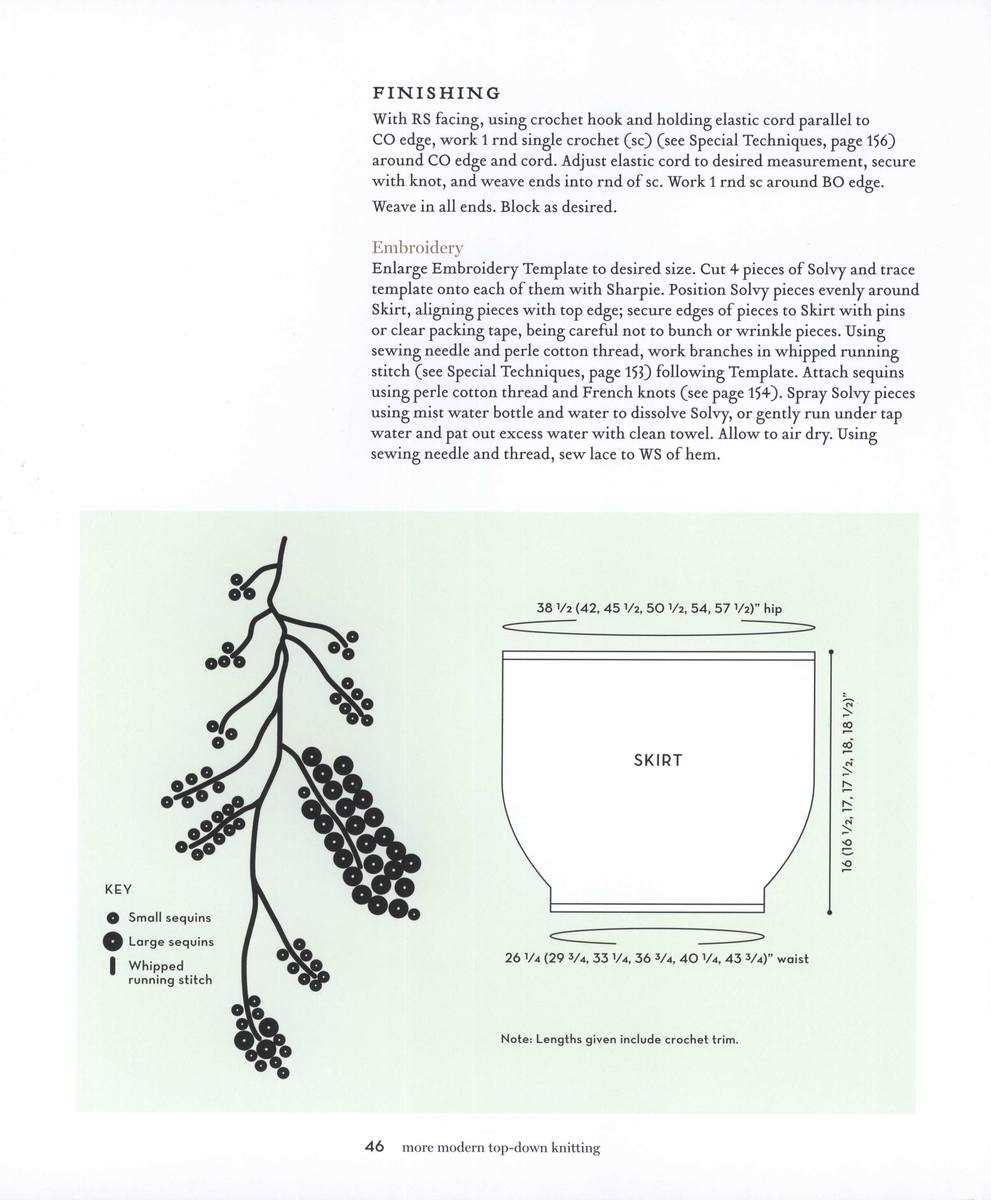
Synthetic fibers, including acrylic, nylon, and polyester, are often chosen for their affordability and easy care. Acrylic yarns are known for their softness and durability, making them a popular choice for items that need to withstand heavy wear and frequent washing. Nylon and polyester fibers are commonly blended with natural fibers to increase the strength and durability of the yarn.
Blended Fibers:
Blended yarns, which combine two or more different types of fibers, offer the best of both worlds. For example, a blend of wool and acrylic can provide the warmth and softness of wool with the durability and easy care of acrylic. Blending fibers can also create unique textures and enhance the overall appearance of the knitted fabric.
- Consider the intended use of your knitted item when choosing fiber content. For example, if you’re knitting a sweater for winter, you might want to opt for a wool or wool blend yarn for maximum warmth.
- Think about your personal preferences and any specific requirements you may have. Some people have sensitivities or allergies to certain fibers, so it’s important to choose yarns that won’t cause any discomfort.
- Consider the drape and structure you want to achieve in your knitted item. Different fibers have different levels of elasticity and drape, so choose accordingly to achieve the desired effect.
- Take into account the care instructions for the yarn. Some fibers require special handling, such as hand washing or dry cleaning, while others can be machine washed and dried.
Overall, the fiber content of your yarn choice can greatly affect the final outcome of your knitting project. By carefully considering the properties and characteristics of different fibers, you can choose the perfect yarn for your pattern and create a beautiful, functional garment.
Finding the Right Weight and Yardage
When choosing a modern top down knitting pattern, it’s important to find the right weight and yardage for your project. This will ensure that you have enough yarn to complete your garment and that the finished piece has the desired drape and appearance.
Weight: The weight of the yarn refers to its thickness or thinness. It is typically described using the standard yarn weight system, which ranges from lace weight (the thinnest) to super bulky (the thickest). When selecting a pattern, make sure to choose a weight that suits the style and function of the garment. For example, a lightweight yarn like fingering or sport weight would be suitable for a summer top, while a heavier yarn like aran or bulky weight would be better for a cozy sweater.
Yardage: The yardage of the yarn refers to the length of yarn in a skein or ball. The amount of yardage required for a project will vary depending on the size of the garment and the weight of the yarn. Most patterns provide a recommended yardage range based on the size and weight of the garment. Be sure to check the pattern to ensure that you have enough yarn to complete your project.
When calculating the yardage needed, it’s always better to have a little extra yarn than to run out before finishing. It’s also important to consider any pattern repeats or additional design elements that may require more yarn. If you’re unsure about how much yarn to purchase, it’s recommended to err on the side of caution and buy a bit more than what is suggested in the pattern.
In summary, finding the right weight and yardage for your modern top down knitting project is essential to ensure that you have enough yarn and achieve the desired result. Consider the weight of the yarn based on the style and function of the garment, and be mindful of the yardage recommended in the pattern. By taking these factors into consideration, you can confidently embark on your knitting project and create a beautiful, well-fitted garment.